On July 17, 1794, sixteen members of the Carmel of Compiegne were executed by the Committee of Public Safety of the National Convention of Revolutionary France. The group consisted of 11 discalced Carmelite nuns, three lay sisters, and two externs. The role of an extern was to interact with the world outside of the monastery, and to accompany any sisters who had to leave the cloister.
At the time of their deaths, all of the sisters were out in the world. Their convent had been closed, and they had just been convicted of treason and sentenced to death. But there was something more. One hundred years before the Reign of Terror, a sister in the convent at Compiegne had a vision of a group of nuns called to 'follow the Lamb.' The Lamb of God is Christ (John 1:29), and so the sister thought it meant that the nuns were to literally offer their lives to Christ. That was what the small community had started praying for: that they would be an offering or holocaust for ending the Reign of Terror.
After tens of thousands of deaths, the Reign of Terror did end on July 28, 1794, eleven days after the execution of the Sisters of Compiegne.
Here is the list of names of the sisters of Compiegne:
- Madeleine-Claudine Ledoine (Mother Teresa of St. Augustine), prioress, b. in Paris, 22 Sept., 1752, professed 16 or 17 May, 1775;
- Marie-Anne (or Antoinette) Brideau (Mother St. Louis), sub-prioress, b. at Belfort, 7 Dec., 1752, professed 3 Sept, 1771;
- Marie-Anne Piedcourt (Sister of Jesus Crucified), choir-nun, b. 1715, professed 1737; on mounting the scaffold she said "I forgive you as heartily as I wish God to forgive me";
- Anne-Marie-Madeleine Thouret (Sister Charlotte of the Resurrection), sacristan, b. at Mouy, 16 Sept., 1715, professed 19 Aug., 1740, twice sub-prioress in 1764 and 1778. Her portrait is reproduced opposite p. 2 of Miss Willson's work cited below;
- Marie-Antoniette or Anne Hanisset (Sister Teresa of the Holy Heart of Mary), b. at Rheims in 1740 or 1742, professed in 1764;
- Marie-Françoise Gabrielle de Croissy (Mother Henriette of Jesus), b. in Paris, 18 June, 1745, professed 22 Feb., 1764, prioress from 1779 to 1785;
- Marie-Gabrielle Trézel (Sister Teresa of St. Ignatius), choir-nun, b. at Compiègne, 4 April, 1743, professed 12 Dec., 1771;
- Rose-Chrétien de la Neuville, widow, choir-nun (Sister Julia Louisa of Jesus), b. at Loreau (or Evreux), in 1741, professed probably in 1777;
- Anne Petras (Sister Mary Henrietta of Providence), choir-nun, b. at Cajarc (Lot), 17 June, 1760, professed 22 Oct., 1786.
- Concerning Sister Euphrasia of the Immaculate Conception accounts vary. Miss Willson says that her name was Marie Claude Cyprienne Brard, and that she was born 12 May, 1736; Pierre, that her name was Catherine Charlotte Brard, and that she was born 7 Sept., 1736. She was born at Bourth, and professed in 1757;
- Marie-Geneviève Meunier (Sister Constance), novice, b. 28 May, 1765, or 1766, at St. Denis, received the habit 16 Dec., 1788. She mounted the scaffold singing "Laudate Dominum". In addition to the above, three lay sisters suffered and two tourières. The lay sisters are:
- Angélique Roussel (Sister Mary of the Holy Ghost), lay sister, b. at Fresnes, 4 August, 1742, professed 14 May, 1769;
- Marie Dufour (Sister St. Martha), lay sister, b. at Beaune, 1 or 2 Oct., 1742, entered the community in 1772;
- Julie or Juliette Vérolot (Sister St. Francis Xavier), lay sister, b. at Laignes or Lignières, 11 Jan., 1764, professed 12 Jan., 1789.
It struck me that the American Revolution and the French Revolution had some things in common. One is that France was still reeling from the financial assistance it had given to our country, and that this was one of many problems which precipitated the revolution. The other similarity is that both France and the United States declared that there were certain rights which were guaranteed for all men, and that these were to be protected. It is here that the two countries differed, however. In our Declaration of Independence, those rights come from a higher power than Man:
We hold these truths to be self-evident, that all men are created equal, that they are endowed by their Creator with certain unalienable Rights, that among these are Life, Liberty and the pursuit of Happiness. (colors, underlining, and italics mine)
This point, the acknowledgement of a Creator, is absent from the French documents. Thousands of people were executed by the government in France under the name of freedom. It makes me wonder what will happen to our own country as we slowly see the importance of God being removed from our government.
I do not recommend Gertrude Le Fort's book The Song of the Scaffold; it is mainly a work of fiction, as were the works by George Bernanos and Francis Poulenc on this subject.










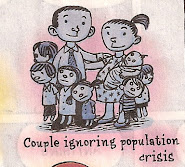
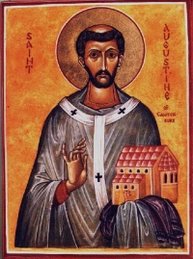



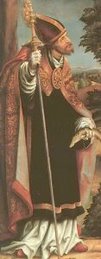
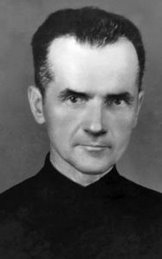

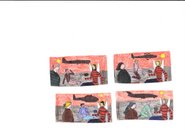


No comments:
Post a Comment